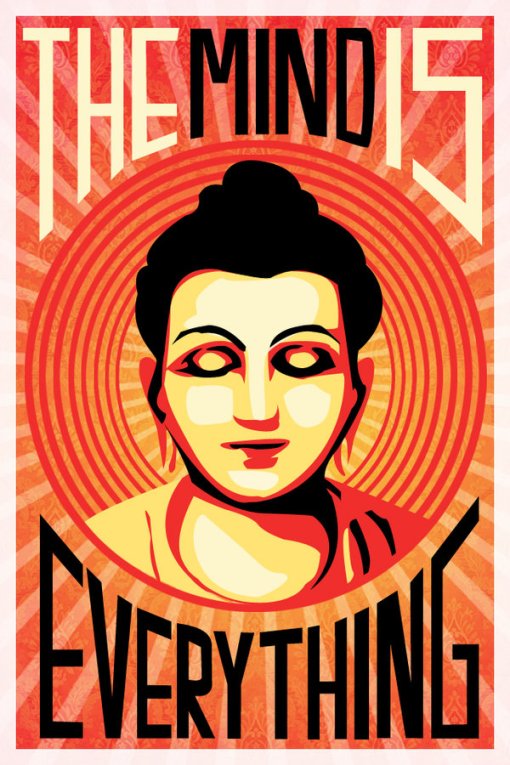
“In the beginner’s mind, there are many possibilities, but in the expert’s, there are few.” ~ Shunryu Suzuki
.
When in India last year, I took a humble room in a Buddhist monastery in Dharamshala.
I clearly remember one particular night. As I was about to fall asleep, something black at the upper corner of the wall caught my attention. Since the lights were dim, I couldn’t quite tell the nature of the black thing. At first, I thought it was just some black paint. However, as I stared more, I realized it was a spider.
Spiders freak me out, so I hardly slept that night, and I anxiously waited for the dawn so I could leave the room. Dawn broke, and I rushed for a chair to see if the spider was gone. I stood on the chair, looked up at the corner, and to my surprise, it was a dot of paint.
I laughed at myself all day long. But what my mind made up that night was especially intriguing. At first sight—before my mind kicked in—it was clear that it was paint. Nonetheless, when I started thinking about it and analyzing it, my mind made up a completely different scenario than the actuality of things. The reality that my mind had created was so powerful that I could see the paint moving.
This story might sound familiar to many of us. Almost every day, we fail to see the reality of things. We misinterpret something and craft an entirely different reality around it. According to Buddhism, this is our fundamental problem.
Buddhists refer to reality as Dhamma.
Dhamma is the truth—the nature of “what is.” There’s natural law manifesting every minute in our lives, and the truth is, we can’t keep it at bay. Things are interdependent, they rise and pass away—and most of the time, there’s nothing we can do about it.
The reality of things is not a problem. The actual problem is how we perceive this reality. In Buddhism, “right view” is the first and most important element of the Eightfold Path. In order to cease our suffering, we must develop the right view on things—but we rarely do.
When reality isn’t pleasant, we refuse to accept it. We always feel like there’s something missing or incomplete. Every time we look at our reality, it seems as if there’s something wrong with it.
The perfect example is what happened in my room in Dharamshala. The obvious reality was that the black dot at the corner was paint. However, I felt that there must be something wrong, something more to it. So, I began thinking and analyzing in hopes of finding a truth that would please me. Consequently, my mind was agitated, and I failed to get a good night’s sleep. I caused myself pain that wasn’t naturally there.
We create perceptions to get away from the discomfort of reality. Not only do we build false beliefs, but we also hold onto them and fail to let them go. As a result, we separate ourselves from reality and step into a world of our own creation.
According to Buddhism, we stop creating conceptual worlds when we stop thinking too much about everything. Instead of attending to dialogues in our minds, we must attend to actual experiences.
Steve Hagen puts it this way: “We only need to start looking and note how what we see differs from what we think. […] What remains is what has been right here all along. Reality, before we try to make something of it.”
We need to understand that reality isn’t something we create or something that we can seek. Reality is what’s happening right here, right now. It’s what’s happening before our minds take hold of it.
Know that no matter how much we try to arrange things in the proper way, we won’t be satisfied. The only real satisfaction happens when we stop interfering with the intelligence of the universe and trying to make sense of it.
Our problems don’t lie outside ourselves; they’re inside us. Whatever your mind makes up right now, realize it’s a lie. The only truth is your naked experience right at this moment. Tap into it.
~
Author: Elyane Youssef
Image: Deviant Art
Editor: Yoli Ramazzina
 Share on bsky
Share on bsky






Read 1 comment and reply